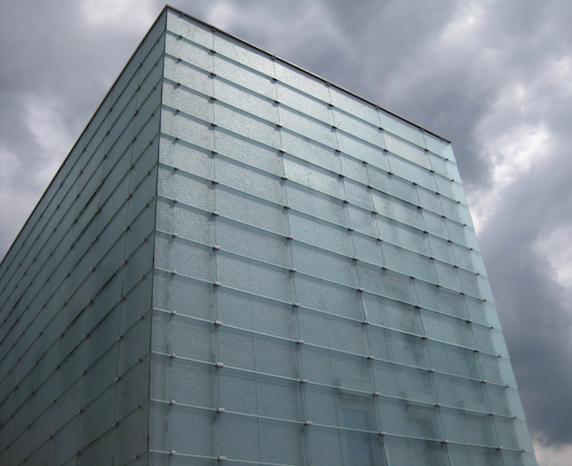 Building façades serve a dual purpose: they create the visual identity of a building, and, more importantly, repel the elements – wind, rain, heat, and cold – in order to maintain a watertight enclosure and protect the structure.
Building façades serve a dual purpose: they create the visual identity of a building, and, more importantly, repel the elements – wind, rain, heat, and cold – in order to maintain a watertight enclosure and protect the structure.
Cracks, crevices, or other openings in exterior shells – even minute breaks in the surface – can allow water to enter a building via kinetic energy, pressure differences, or capillary action. Over time, this regular penetration of water will continue, worsen, and eventually lead to damage. The installation of an added layer of façade protection can stop the damaging process.
Building industry experts know that water infiltration is a primary factor in the premature deterioration of a building. Even minor leaks can lead to substantial issues, including metal erosion, rotting and mold (which pose serious health hazards to building occupants), a reduction in the effectiveness of insulation, degradation of structural systems, and damage to interior finishes.
A multi-layer system, including a rainscreen assembly, has proven highly efficient in shielding a building from the elements and controlling moisture, while simultaneously offering a range of added benefits to tall buildings.
Rainscreens offer an ideal solution to address both aesthetic and structural concerns for high-rise building façades in distress or in need of a “makeover.” A rainscreen is an architectural exterior over-cladding system that stands off from the building’s weather-resistant barrier. The over-cladding material cloaks the building and protects it from wetness, controlling water drainage and evaporation while at the same time giving the building an entirely new appearance.
New construction and retrofit projects alike are great candidates for the transformational power of rainscreens. Much like a chic raincoat, a rainscreen adds beauty and style while keeping façades “healthy” and reducing expensive maintenance requirements. These systems can also provide rehabilitative benefits to an entire neighborhood by enhancing a single building and establishing it as a landmark.
Rainscreen claddings can be constructed from a variety of materials, from fiber cement to terracotta. Glass, however, is an ideal design choice due to its natural resilience, easy upkeep, resistance to staining and graffiti, and timeless appeal. As a nonporous material, glass is an excellent medium for repelling water and wind. Even if a building’s façade is constructed of wood, a properly designed glass rainscreen can protect a high-rise and ensure its stability and performance for hundreds of years.
Current architectural glass technology offers architects an exceptionally elastic, customization-friendly design palette to add a dynamic element to a building or create a unique, branded appearance. The virtually limitless decorative glass options include transparent, translucent, and opaque colors; contemporary patterns; and nature-forward, bird-friendly designs. The choices of photographic printed interlayers for laminated glass and direct-to-glass printing or silk-screening for fully tempered glass make glass façades a perfect medium for the large-scale expression of architectural creativity.
In addition to providing aesthetic enhancements and structural integrity, a rainscreen system can be fast and relatively simple to install on a tall building. While rainscreens can be assembled onsite, a unitized system often results in economic benefits, particularly for new construction, larger/taller projects, or those in areas with high field-labor rates.
Unitized systems are fabricated and preassembled offsite in the controlled environment of a factory or glazing facility, allowing for higher quality assurance. Units are typically built in one-story-high sections and then transported to the site, where they are hoisted into place by cranes and connected to each other and to the building. The pre-fabrication process also offers an advantage to sites with limited staging areas. Sections of the rainscreen can be lifted into position and installed immediately as they arrive, requiring little or no storage space.
Retrofit projects can encompass rainscreens that are either built on site or unitized. The rainscreen manufacturer’s design team can collaborate with the architects, façade consultants, and other trades to develop the right solution based on the unique requirements of the building. Installing a decorative glass rainscreen over an existing façade is generally a far less costly process than traditional demolition, repair, and re-glazing of exterior skins – particularly in the case of a high-rise structure.
In addition, the installation process takes place almost entirely outside, avoiding intrusion into normal building operations. Scaffolding can be erected, and an exterior lift can bring materials and workers up the façade without disrupting the occupants within. If scaffolding is impractical or too costly due to the height of the high-rise, and workers can access the façade through the interior of the building, a crane can transport rainscreen system components and materials to installers stationed inside the structure.
With so many attractive benefits, rainscreens are a highly reliable choice for high-rise buildings facing significant exposure to the elements. Not only does rainscreen over-cladding provide watertight protection from invasive moisture, it adds a dose of elegance and style. Easily customizable, it can significantly improve the look of any building. Most importantly, a glass rainscreen is fast to install, cost-effective, and safe. It can ensure the structural viability of new and retrofit buildings alike, helping extend their productive lifespan.
Images courtesy of Bendheim
Said Elieh
Said Elieh is head of technical design for Bendheim Wall Systems, Inc., North America’s leading supplier of channel glass wall systems for building façades, glass rainscreens, and interior walls. He can be reached at [email protected].

